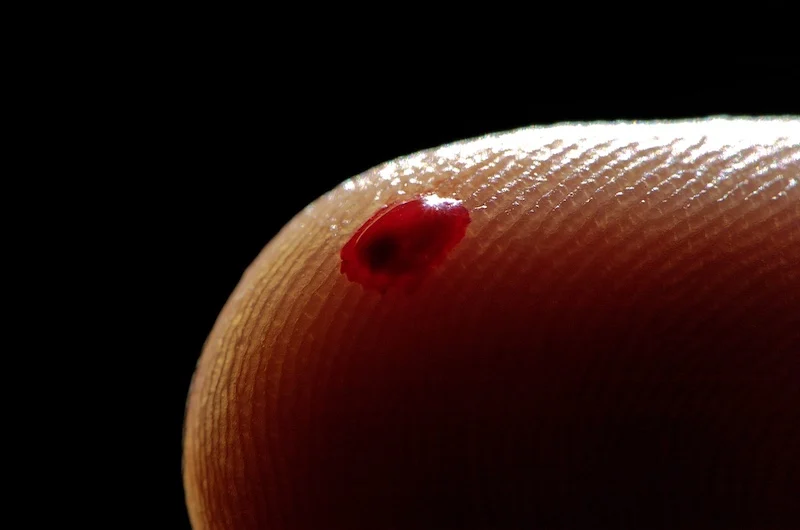One-sentence summary:
Researchers have developed the Tip Optofluidic Immunoassay (TOI), a portable diagnostic platform that rapidly assesses COVID-19 antibody protection using just one microliter of fingertip blood.
Three brief takeaways:
- Rapid, Portable Testing: TOI delivers comprehensive immune profiling—including antibody binding and virus inhibition—in only 40 minutes, without the need for traditional lab equipment.
- High Sensitivity & Innovation: With detection sensitivity around 0.1 ng/mL and the novel RIVIA 2.0 assay, the platform enables fast and precise evaluation of neutralizing antibody activity.
- Validated and Versatile: Validated on real-world samples, TOI is suitable for use in clinical, field, and low-resource settings, and adaptable for other infectious diseases beyond COVID-19.
Researchers from the Shenzhen Institutes of Advanced Technology (SIAT), Chinese Academy of Sciences, along with multiple collaborators, have developed a compact diagnostic platform that can evaluate antibody protection against COVID-19 using only a single microliter of fingertip blood. Known as the Tip Optofluidic Immunoassay (TOI), the system delivers a comprehensive immune profile—measuring both antibody binding and viral inhibition—in just 40 minutes.
Tip Optofluidic Immunoassay Is Suitable for Field and Clinical Use
As new SARS-CoV-2 variants continue to emerge and individual vaccination or infection histories grow more complex, there is an urgent need for accessible tools that can assess immune protection quickly and accurately. The Tip Optofluidic Immunoassay platform addresses this challenge by combining microfluidic biosensing and chemiluminescence detection in a portable format suitable for both clinical and field use.
At the core of the platform are high-affinity polystyrene microfluidic immuno-reactors that interface directly with standard pipette tips. These reactors are paired with a portable chemiluminescent imaging station, creating a simple yet powerful workflow. This design supports the rapid and quantitative evaluation of IgG binding levels, binding kinetics, and virus inhibition capacity—all using only a small drop of fingertip blood, without the need for complex laboratory equipment or large sample volumes.
Compared with traditional assays such as ELISA or virus neutralization tests (VNTs), TOI significantly reduces testing time and operational demands. It achieves a detection sensitivity of approximately 0.1 ng/mL, spans a dynamic range of 3 to 4.5 orders of magnitude, and delivers a signal-to-noise ratio exceeding 10,000. These features enable accurate, high-resolution immune analysis at the point of care.
A key innovation in the methodology is the development of RIVIA 2.0, a rapid in vitro inhibition assay that emulates viral neutralization. Central to this advance is the rational protein engineering of SARS-CoV-2 spike ectodomain (S-ECD) trimers, synthetically optimized with orientation-specific Avi-biotin tags to ensure consistent and functional surface presentation. These engineered protein probes, paired with human ACE2-Fc receptors, form a highly controlled binding interface that enables precise measurement of neutralizing antibody activity within just 20 minutes. By applying synthetic biology principles to optimize these probes, RIVIA 2.0 significantly improves the speed, reproducibility, and scalability of functional immune testing over conventional neutralization assays.
System Was Validated Over Six Months
The system was validated with 135 samples from 113 individuals, including a subset followed over six months. The results confirmed TOI’s ability to detect broad-spectrum and high-titer antibody responses, particularly among individuals with hybrid vaccine regimens. Importantly, the researchers proposed a preliminary IgG concentration threshold (~20 ng/mL) associated with reduced short-term infection risk, highlighting Tip Optofluidic Immunoassay’s potential for predictive immune monitoring.
Beyond COVID-19, the platform could be adapted for other infectious diseases such as influenza, hepatitis, or future viral threats. Its low sample requirements and portable design make it particularly valuable for decentralized testing in clinics, communities, and resource-limited settings. It also holds promise for therapeutic antibody development and vaccine efficacy studies.
This study demonstrates how Tip Optofluidic Immunoassay bridges the gap between advanced laboratory diagnostics and real-world application. By combining speed, sensitivity, and multi-dimensional immune assessment in a highly compact format, TOI sets a new benchmark for personalized and scalable infectious disease management.
Featured Image: Jorge Espel | Dreamstime.com





